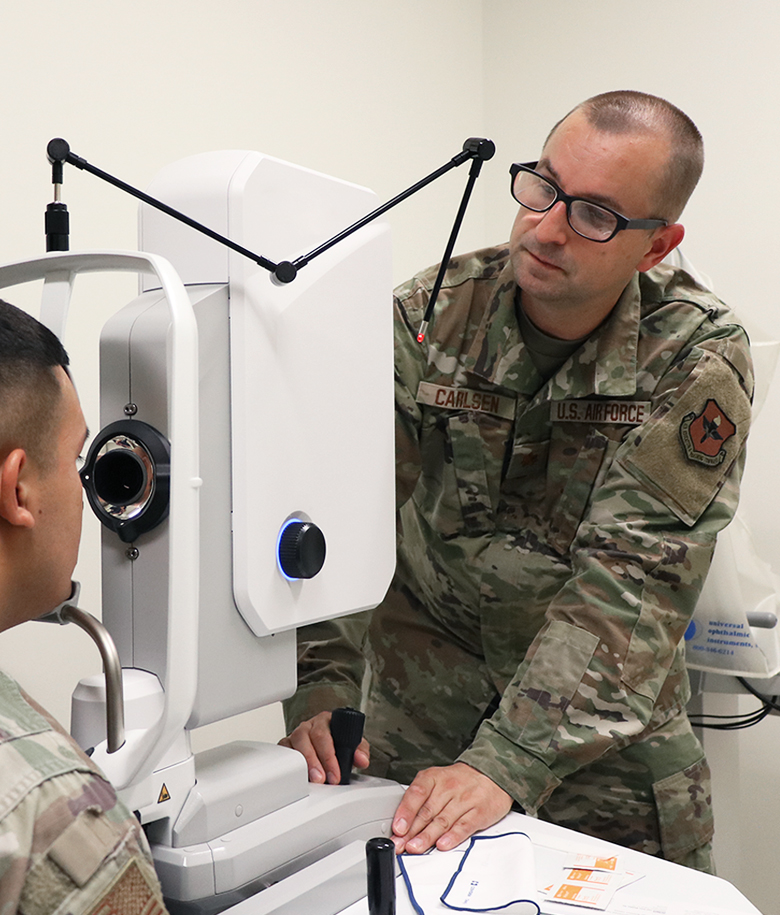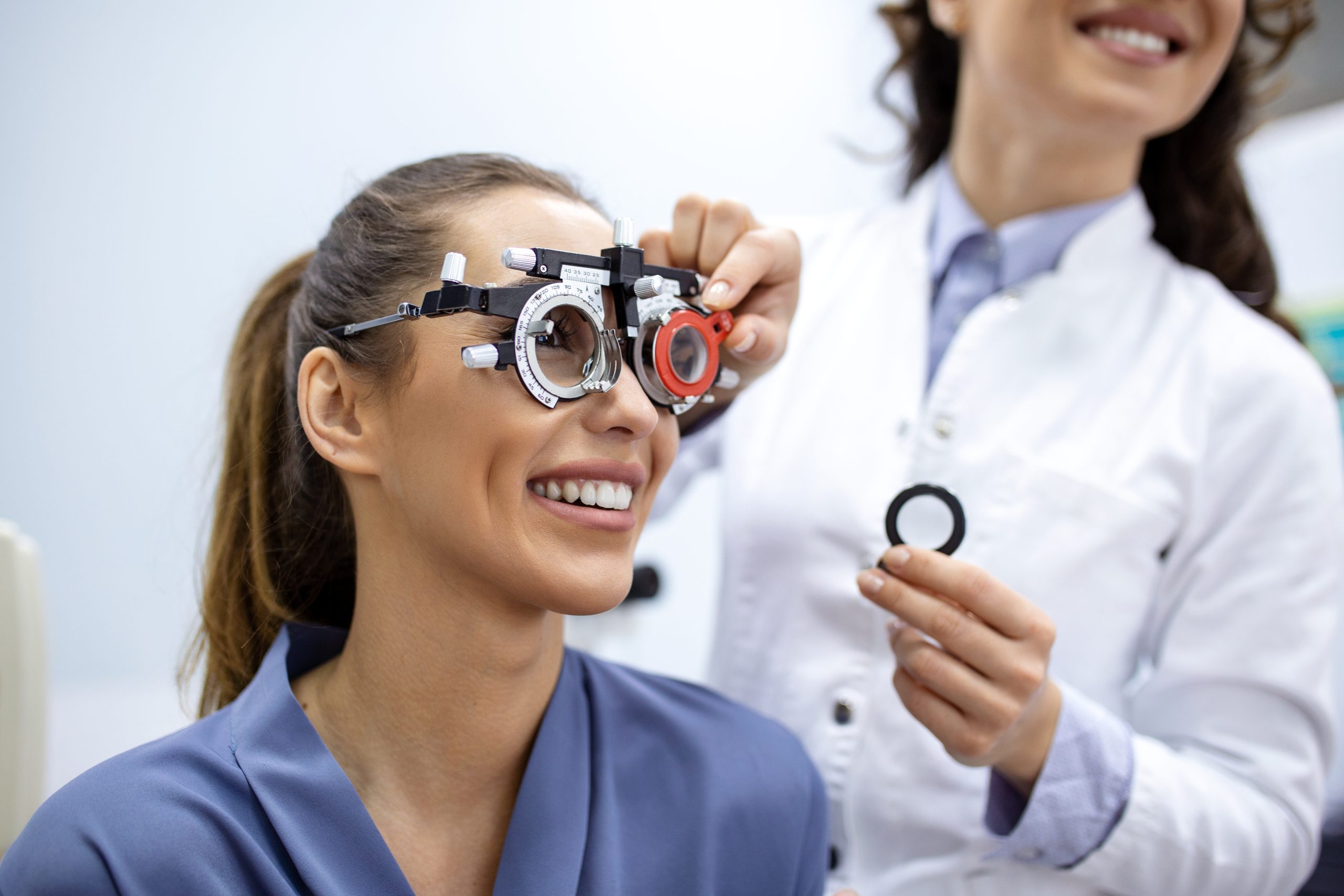Why Choosing an Eye Doctor Optometrist is Necessary for Your Eyes
Why Choosing an Eye Doctor Optometrist is Necessary for Your Eyes
Blog Article
Checking Out the most recent Technical Advancements in Optometry and What They Mean for Eye Doctors
In the ever-evolving field of optometry, recent technical improvements are reshaping exactly how practitioners come close to eye treatment. From the precision of Optical Comprehensibility Tomography to the nuanced insights offered by AI-driven analysis tools, these advancements are setting new requirements in client evaluation and therapy. Teleoptometry is poised to redefine ease of access, making sure that know-how transcends geographical limitations. As these innovations penetrate the method, optometrists are encountered with the challenge of accepting these tools to boost person outcomes. The question stays: exactly how will these technical changes redefine the functions and obligations within the career?
Advancements in Diagnostic Devices
Progressing the area of optometry, innovations in diagnostic devices have transformed the method eye treatment specialists examine and diagnose visual disabilities and ocular conditions. The previous decade has witnessed significant technological developments, enabling more precise and comprehensive examinations. Optical Comprehensibility Tomography (OCT), for instance, gives high-resolution cross-sectional photos of the retina, enabling for the early detection of diseases such as glaucoma and age-related macular degeneration. This non-invasive imaging method has actually become vital in modern optometric practice.
An additional key innovation is the intro of innovative corneal topography systems, which map the surface curvature of the cornea with accuracy. These devices are specifically beneficial for fitting get in touch with lenses and detecting corneal problems. Furthermore, electronic retinal imaging has actually changed standard ophthalmoscopy, using thorough, breathtaking views of the retina that facilitate thorough aesthetic examinations.
The growth of wavefront aberrometry has actually also been crucial, allowing the evaluation of refractive errors with unrivaled precision (Eye Doctor). This innovation aids in personalizing rehabilitative lenses and boosting medical end results for refractive surgical procedures. Jointly, these analysis advancements encourage optometrists to provide premium person care, guaranteeing early treatment and tailored therapy techniques, ultimately boosting visual health and wellness outcomes
AI in Individual Administration
Structure on the foundation of sophisticated diagnostic tools, the consolidation of synthetic knowledge (AI) in individual administration represents a transformative jump for optometry. AI systems are increasingly utilized to enhance performance, accuracy, and customization in patient care.
Furthermore, AI-driven systems promote structured client communications and management procedures. Automated scheduling, digital consultations, and customized follow-up strategies not just improve person complete satisfaction yet also maximize time administration for practitioners. These systems can triage people based upon the seriousness of their conditions, guaranteeing that those in vital demand obtain timely focus.
Additionally, AI improves decision-making by offering optometrists with evidence-based recommendations and therapy paths. By integrating data from electronic health and wellness records, AI tools provide understandings that notify scientific decisions, reducing the threat of errors and improving individual results. As AI continues to advance, its function in patient management will likely expand, improving the landscape of optometric treatment.
Advances in Retinal Imaging
In the realm of optometry, retinal imaging has actually observed amazing technical developments that are boosting diagnostic abilities and patient care. Advancements such as Optical Comprehensibility Tomography (OCT) and fundus digital photography have revolutionized exactly how optometrists examine the retina and imagine.
Enhanced imaging methods like OCT angiography are additional refining diagnostic precision. Optometrist Chino. Such innovations promote the identification of min retinal adjustments that might indicate disease progression.
In addition, innovations in man-made intelligence are boosting retinal imaging by allowing automatic evaluation of big datasets. These systems assist eye doctors in recognizing patterns a measure of pathology, consequently improving diagnostic precision and efficiency. Jointly, these technologies are transforming retinal have a peek at this website imaging into a keystone of modern-day eye care, enhancing outcomes and expanding restorative opportunities.
Teleoptometry's Growing Function
Teleoptometry is significantly coming to be a vital element of eye treatment, driven by advancements in digital interaction and analysis tools. As optometry welcomes blog here electronic transformation, teleoptometry helps with remote appointments, enabling eye doctors to expand their solutions past traditional boundaries. This is specifically useful in country and underserved locations where accessibility to specialized eye treatment is commonly restricted. By leveraging high-resolution video conferencing and progressed retinal imaging, optometrists can conduct detailed eye exams from afar, making certain prompt diagnosis and treatment.
The assimilation of expert system (AI) more boosts teleoptometry, allowing the analysis of aesthetic information and helping in the discovery of ocular conditions such as glaucoma and diabetic retinopathy. AI-powered formulas can swiftly analyze complicated imaging data, offering optometrists with beneficial insights that bolster scientific decision-making.
Moreover, teleoptometry supports continuity of treatment with seamless integration with electronic wellness documents (EHRs), enabling eye doctors to preserve extensive patient histories. When seeking advice from with various specialists., this makes certain that people get customized and consistent care even.
In spite of these advantages, challenges continue to be, consisting of making sure information safety and security and taking care of patient expectations. Nonetheless, teleoptometry stands for a considerable stride in the direction of even more easily accessible, reliable, and patient-centered eye treatment. As modern technology evolves, its function is positioned to broaden even more.

Future Fads in Eye Care
A myriad of innovative fads is set to reshape the future of eye care, driven by technological improvements and the developing needs of clients. One considerable fad is the assimilation of expert system (AI) in diagnostics, which promises to improve the precision and efficiency of eye evaluations. AI algorithms can analyze substantial quantities of information from retinal pictures, possibly identifying problems like diabetic person retinopathy and why not try this out glaucoma earlier than conventional techniques.
Furthermore, individualized medicine is obtaining traction in optometry, with hereditary screening educating customized treatment strategies. This method intends to maximize person end results by tailoring interventions to specific genetic profiles. Wearable innovation, such as wise get in touch with lenses, is additionally on the perspective, using real-time tracking of intraocular stress or glucose degrees, hence supplying continuous insights right into ocular and systemic wellness.
The fostering of enhanced fact (AR) and online fact (VR) in training and person education is one more emerging pattern. These modern technologies provide immersive experiences that can improve understanding and skills both for patients and optometrists. As these trends evolve, optometrists should remain abreast of technological improvements to give advanced treatment, ensuring improved individual results and complete satisfaction in the vibrant landscape of eye treatment.
Final Thought

Collectively, these diagnostic improvements equip optometrists to supply exceptional client care, making sure very early treatment and tailored treatment strategies, inevitably enhancing visual wellness outcomes.

As these technologies proceed to advance, optometrists should adapt and include them into practice, inevitably maximizing process effectiveness and boosting the standard of eye treatment supplied to people.
Report this page